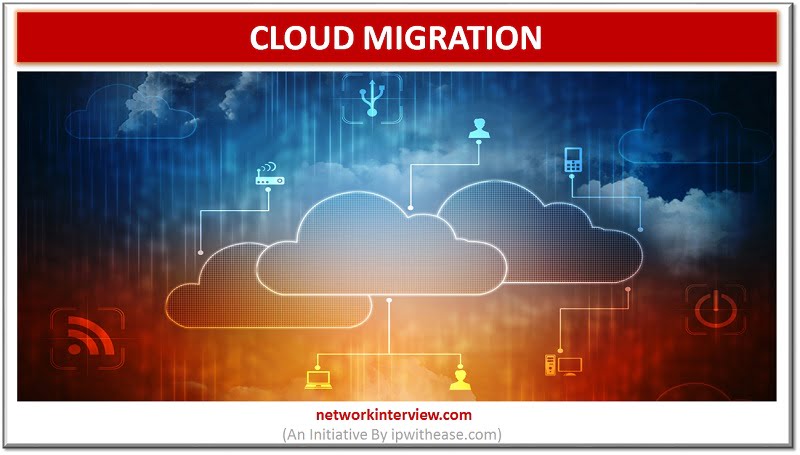
What is Cloud Migration
Cloud Migration
Cloud computing is a technology that involves delivering different hosting services over the Internet using various hardware and software. Cloud computing allows we can access any files from anywhere in the world. It creates files remotely accessible. It can be both public and private. Private cloud services only provide services to a certain number of people. On the other hand, public cloud services offer their services over the Internet for a fee.
Cloud migration is the concept of providing an on-demand computer resource system. It especially concerns about data which needs to be transfer.
Types of Cloud migration tools
There are 3 types of cloud migration tools that can be differentiated on the basis of the source of migrating data. They are as follows:
- Public cloud: In this type, we transfer the data and applications from the local on-premises to the public cloud.
- Cloud to cloud migration: When we transfer the data or application from one cloud to another cloud, it is known as the cloud to cloud migration.
- De-clouding: The third one involves the practice of unclouding in which we moved off your data and applications from cloud to local data center. It is also named as reverse cloud migration.
Related – Top 10 Cloud Migration Tools
Benefits of Cloud migration
The Cloud Computing market continues to grow year after year because companies are becoming more aware of the benefits of adopting cloud computing and its migration. It has been already in practice with various organizations.
The cloud migration can give us many benefits such as:
- With the help of the cloud system, we are unburdened from the security issues related to the data as the cloud’s team of security will be responsible for the same. Hence, security is more on cloud computing.
- Because of the huge amount of data on-premises, it becomes quite difficult to handle. So, by migrating this data on the cloud we can overcome the complexity of data by simplifying it and further employees can focus on other constructive activities adding value to organizations IT ecosystem.
- Scalability is one of the most important advantages of cloud computing. Whether we are scaling up slowly or quickly, a cloud data warehouse can accommodate scale up/scale down promptly and with ease.
- For the maintenance of data on-premises, we need an infrastructure that requires some cost. But when we move to the cloud, benefit of organized infrastructure is achieved while saving money.
Cloud migration challenges
The bigger your organization’s present framework, the harder the task would be to perform migration. To execute any big change, we also need to face the various challenges associated with it. Moving the data and files from on-premises to the cloud also have some problems with it. They are as follows:
- When we transfer data to the cloud it may require the re-planning of the data model. It may be possible that warehouse does not support the cloud as different cloud data supports different types of schemas. For example, the introduction of VARIANT, OBJECT, and ARRAY was done in Snowflake to support semi-structured data.
- We are possibly worried about how we will keep up secure information when we move it to the cloud where we have less control. Security is a worry during and after the relocation. Likewise, sensitive information is frequently dependent upon consistency prerequisites, which can be difficult to help during the relocation procedure.
- If we use stored measures, we might be amazed to discover that this arrangement is not generally supported in cloud conditions. Moving these stored measure strategies to a cloud information stockroom can be quite difficult.
Cloud migration tools and services
There are various tools and services available for helping in planning and executing a cloud migration.
For example, public cloud providers, including Amazon Web Services (AWS), Microsoft Azure and Google, offer cloud migration services to support private/dedicated networks for data transfers, as well offline migrations.
For other tasks such as to Migrate to Microsoft 365 and Azure Migration Services there are CSPs who can help you with planning, deployment of Cloud Migrations.
Examples of migration services from public cloud providers include:
- Azure Migrate
- AWS Snowball
- Google Cloud Data Transfer Service
- AWS Migration Hub
- Azure Import/Export
- Google Transfer Application



